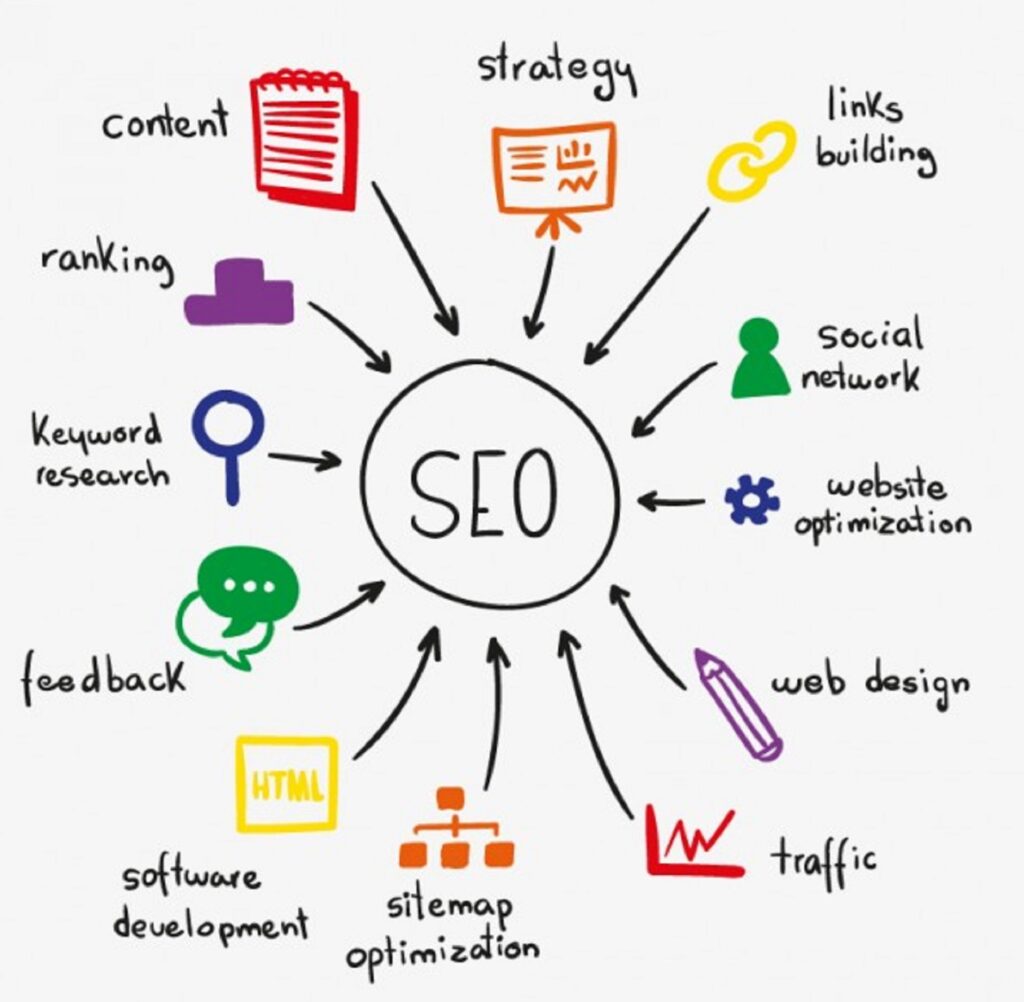
In the ever-evolving world of digital marketing, SEO has become a cornerstone for businesses looking to grow their online presence. While many marketers are tempted by quick wins—like one-off content pushes or aggressive backlink campaigns—the reality is that true success in SEO comes from sustainable strategies. This article explores how to shift your focus from short-term gains to long-term growth through sustainable SEO tactics.
By the end of this piece, you’ll understand why sustainable SEO is essential, how it differs from quick fixes, and what steps you can take to build a strategy that delivers lasting results.
What Is Sustainable SEO and Why It Matters
Sustainable SEO refers to the practice of implementing search engine optimization techniques that not only improve your website’s visibility but also maintain and enhance its performance over time. Unlike quick wins, which may offer temporary boosts in traffic or rankings, sustainable SEO focuses on building a strong foundation that adapts to algorithm updates, user behavior changes, and market trends.
This approach is rooted in several key principles:
- Consistency: Regularly updating content, optimizing technical aspects, and monitoring performance.
- Quality: Creating valuable, user-centric content that aligns with search intent.
- Adaptability: Staying informed about algorithm changes and adjusting strategies accordingly.
- Longevity: Building authority and trust over time rather than relying on short-term tactics.
Google’s algorithms are designed to reward websites that provide genuine value to users. As a result, sustainable SEO isn’t just about ranking higher—it’s about creating a better experience for your audience, which ultimately leads to more engagement, conversions, and brand loyalty.
How Sustainable SEO Impacts SEO Performance
Sustainable SEO doesn’t just affect your rankings; it influences every aspect of your online presence. Here’s how it impacts key metrics:
- Traffic Growth: By consistently publishing high-quality content and optimizing for relevant keywords, you attract more organic traffic over time.
- Engagement Metrics: Users are more likely to stay on your site, interact with your content, and convert when they find value.
- Dwell Time: Google uses dwell time as a signal of content quality. Sustainable SEO ensures that your content remains relevant and engaging.
- Brand Authority: A well-maintained website with strong backlinks and optimized technical elements builds trust with both users and search engines.
For example, a business that focuses on regular content updates and technical improvements may see a steady increase in traffic over 6–12 months. In contrast, a company that relies on one-time keyword stuffing or spammy backlinks might experience a spike followed by a drop once Google penalizes those tactics.
Step-by-Step Implementation Framework
Implementing sustainable SEO requires a structured approach. Here’s a step-by-step framework to help you get started:
1. Define or Audit the Current Situation
Before making any changes, conduct a comprehensive audit of your website. Look at:
– Technical SEO: Check for broken links, page speed, mobile-friendliness, and crawl errors.
– Content Quality: Evaluate the relevance, depth, and user intent alignment of your existing content.
– Backlink Profile: Analyze the quality and diversity of your backlinks.
Tools like Screaming Frog, Ahrefs, and Google Search Console can help streamline this process.
2. Apply Tools, Methods, or Tactics
Once you have a clear understanding of your current state, implement the following tactics:
– Keyword Research: Focus on long-tail, transactional, and informational keywords that align with user intent.
– Content Strategy: Create a content calendar that includes blog posts, guides, and other resources that address your audience’s needs.
– On-Page Optimization: Optimize title tags, meta descriptions, headers, and images to improve relevance and readability.
– Technical Improvements: Fix crawl issues, optimize site speed, and ensure secure browsing (HTTPS).
3. Measure, Analyze, and Optimize
Use analytics tools to track your progress and make data-driven decisions:
– Track Keyword Rankings: Monitor how your target keywords perform over time.
– Analyze Traffic Sources: Understand where your traffic is coming from and how users engage with your content.
– Conduct A/B Testing: Experiment with different headlines, CTAs, and content formats to see what resonates best.
Regularly review your performance and adjust your strategy based on insights. This continuous cycle of testing and refinement is what makes sustainable SEO effective.
Real or Hypothetical Case Study
Let’s look at a hypothetical case study of a small e-commerce business that shifted from quick wins to sustainable SEO:
Background: The business relied heavily on paid ads and low-quality content to drive traffic. They saw initial success but struggled with declining traffic after the ads were paused.
Action: They adopted a sustainable SEO strategy by:
– Conducting a technical audit and fixing crawl errors.
– Publishing a series of in-depth product guides and how-to articles.
– Building relationships with industry influencers for guest posts and backlinks.
– Optimizing their website for mobile and improving load times.
Results: After 9 months, the business saw a 150% increase in organic traffic, a 40% improvement in average session duration, and a 25% boost in sales. Their rankings for core keywords improved significantly, and their backlink profile became more authoritative.
This example illustrates how sustainable SEO can lead to long-term growth, even for businesses that previously relied on quick fixes.
Tools and Techniques for Sustainable SEO
To implement a sustainable SEO strategy, you’ll need the right tools. Here are some modern solutions that can help:
- Ahrefs – For keyword research, competitor analysis, and backlink audits.
- Google Analytics & Search Console – To track traffic, user behavior, and search performance.
- Screaming Frog – For technical SEO audits and site crawling.
- Surfer SEO – For on-page content optimization and semantic scoring.
- Ubersuggest – For keyword suggestions, content ideas, and competitor insights.
- Canva & Grammarly – For content creation and editing.
These tools allow you to monitor your progress, identify opportunities, and refine your strategy over time.
Future Trends and AI Implications
As AI continues to shape the digital landscape, sustainable SEO will need to evolve alongside these advancements. Here are a few trends to watch:
- AI-Powered Content Creation: Tools like Jasper and Copy.ai are already helping businesses generate high-quality content at scale. However, human oversight is still critical to ensure authenticity and relevance.
- Voice and Multimodal Search: With the rise of voice assistants and visual search, SEO must adapt to new forms of user interaction.
- E-E-A-T (Expertise, Experience, Authoritativeness, Trustworthiness): Google is placing increasing emphasis on E-E-A-T, especially for YMYL (Your Money Your Life) content. This means content creators must demonstrate credibility and expertise.
- Core Web Vitals: Page experience signals like loading speed, interactivity, and visual stability will play an even bigger role in rankings.
To stay ahead, businesses should invest in AI tools that support sustainable practices while maintaining a human touch. This balance will be key to future-proofing your SEO strategy.
Key Takeaways
- Sustainable SEO is a long-term commitment that requires consistency, quality, and adaptability.
- Quick wins may provide short-term gains, but they often lead to instability and penalties.
- Focus on user intent and content quality to build trust and authority.
- Use the right tools to monitor performance, analyze data, and refine your strategy.
- Stay informed about algorithm updates and industry trends to remain competitive.
In the end, sustainable SEO isn’t just about ranking higher—it’s about building a resilient, user-focused online presence that stands the test of time.
Meta Title: How to Use ‘Sustainable SEO’ Tactics Over Quick Wins for Long-Term Success
Meta Description: Learn how to shift from quick SEO wins to sustainable strategies that deliver long-term growth and stable rankings.
SEO Tags (5): sustainable seo, long-term seo, content strategy, technical seo, keyword research
Internal Link Suggestions: Parameter #12: Technical SEO Best Practices, Parameter #7: Content Strategy for SEO
External Source Suggestions: https://www.semrush.com, https://ahrefs.com, https://search.google.com










